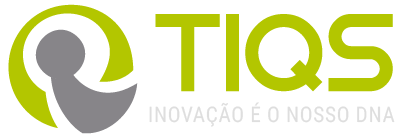PROCESS AUTOMATION WITH RPA
QUICKLY DEVELOP A STRATEGIC VISION FOR YOU BUSINESS
RPA, or Robotic Process Automation, operates a software that creates (ro)bots able to run processes according to your company’s dynamics. This technology avoids human flaws at the same time it brings several benefits.




SCALABILITY TO SUCESS
TIQS HAS THE BEST SOLUTION TO AUTOMIZE YOUR COMPANY'S PROCESSES
Task automation reduces costs and risks, transforming the whole development of the business and allowing a better time management. RPA can be applied in two modalities:
ASSISTED RPA
Union between technology and human material. The bot is configured to interact with the company’s team, optimizing services.
UNASSISTED RPA
Bots are configured to run tasks 24/7. It is possible to automize large scale back-office processes, reducing costs and repetitive tasks.
RPA APPLIED TO ERP
Many ERP operations are repetitive, increasing the risk of errors. In applying RPA to the system, your company guarantees quick activities execution, better control, conformity and real-time information analysis.
The customized implementation makes it an easy to use and simple tool, as well as it is encrypted and extremely safe.


INTELLIGENT AUTOMATION: MICROSOFT AND AUTOMATION ANYWHERE
The combination of excellent solutions provides an intuitive interface which optimizes productivity. In this context, Power Platform and RPA promote intelligent automation operating to Microsoft’s three clouds and applying advanced security methods for data, bots and users.
BOTS LIFECYCLE MANAGEMENT
TIQS fully assists the management of the whole bot lifecycle. The stages are distributed in separated environments (test, acceptance and production, for an example) and the Bot Lifecycle Management (BLM) allows efficient transitions between the stages before directing them to production.
RBAC (Role Based Access Control) makes it possible to divide tasks with high level monitoring and allows real-time control. Beyond that, it responds to standard structures such as SOX (Sarbanes-Oxley Law) and CMMI (Capacity and Maturity Models Integration).

